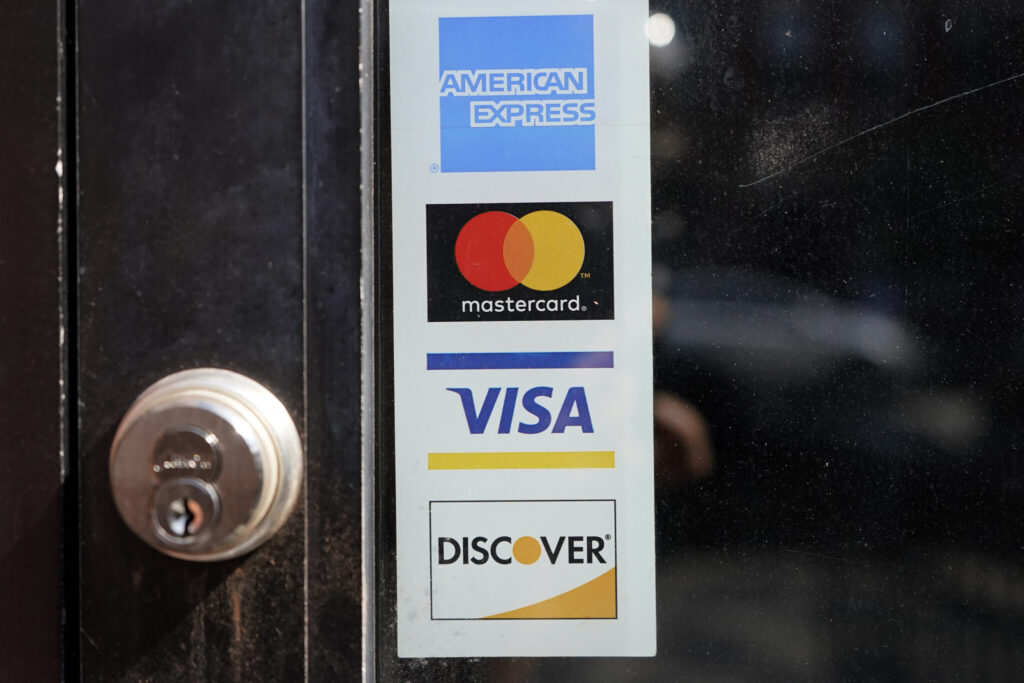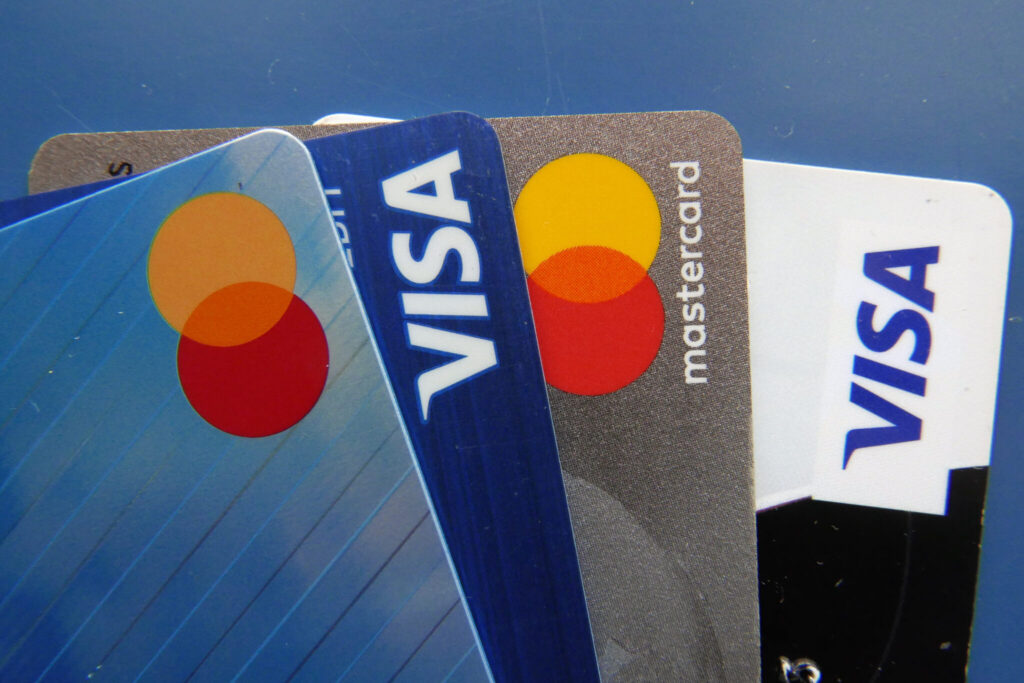The Federal Reserve raised its key rate by another quarter point Wednesday, bringing it to the highest level in 15 years as part of an ongoing effort to ease inflation by making borrowing more expensive. If you have money to save, you’ll probably earn a bit more interest on it, but the increase will make it even costlier to borrow for homes, autos and other purchases. The interest rate increase comes at a time when credit card debt is at record levels. Here’s what the increase means for your credit card bill and what you can do if you’re carrying debt:
Fed hikes rates: Credit card debt at record high
Newslooks- NEW YORK (AP)
As the Federal Reserve raises interest rates again, credit card debt is already at a record high, and more people are carrying debt month to month.
The Fed’s interest rate increases are meant to fight inflation, but they’ve also led to higher annual percentage rates (APRs) for people with credit card debt, which means they pay more in interest. The Fed announced Wednesday that it would increase rates another quarter of a point.
With inflation still high, people are leaning on their credit cards more for everyday purchases.
“It’s the economy, inflation, gas prices, and food costs,” said Lance DeJesus, 46, kitchen manager at the Golden Corral in York, Pennsylvania. “A year ago, you could go to the grocery store with a hundred bucks and come out with a bunch of bags. Now, I come out with just one bag.”
DeJesus said he carries a credit card balance of roughly $2,600 from month to month over several cards, which have interest rates from 16.99% to 21.99%.
Early in the pandemic, when DeJesus lost his job, he said that unemployment payments, stimulus checks, and child tax credits (which went to his household via his wife, who has three children) all helped him stay afloat. Now, with COVID-era emergency relief and stimulus policies ending, he uses credit for emergencies.
He’s not alone: 46% of people are carrying debt from month to month, up from 39% a year ago, according to Bankrate.com, an online financial information site.
Bankrate says the average credit card interest rate, or annual percentage rate, has reached 20.4% — the highest since their tracking began in the mid-1980s.
A new poll by The Associated Press-NORC Center for Public Affairs Research finds 35% of U.S. adults report that their household debt is higher than it was a year ago. Just 17% say it has decreased.
Roughly 4 in 10 adults in households making under $100,000 a year say their debt is up, compared with about a quarter in households making more than that. About half of Black and Hispanic adults say their household debt has increased, compared with about 3 in 10 white adults.
Data also shows more people are now falling behind on payments, according to Bankrate analyst Greg McBride. He sees this as evidence of a so-called “K-shaped recovery” from the pandemic, in which the distance between the haves and the have-nots grows larger.
“The more than half who pay in full each month are clearly doing a lot better than the almost half who don’t,” McBride said. “Those who tend to carry balances tend to be younger people, people making lower incomes, and those with lower credit scores. Another factor contributing to rising debt is inflation, which means the cost of day-to-day living is outpacing paychecks.”
Typically, on a national scale, it takes something pretty extraordinary for credit card balances to fall, economists agree. The Great Recession, beginning in 2008, and COVID, beginning in 2020, are two periods when they fell sharply.
During the early pandemic, credit card debt dipped 17%, Bankrate said — thanks in part to stimulus programs, emergency relief, and a decrease in consumer spending.
But in the last three months of 2022, credit card balances in the U.S. increased $61 billion to $986 billion, surpassing the pre-pandemic high of $927 billion, according to the Federal Reserve Bank of New York.
Using a credit card can provide protections for people who can pay off the balance every month. But the cost for those who can’t is high.
“What’s not good is carrying balances, paying interest, and falling behind,” McBride said. “No one wants to be paying 20% every month.”
For Gary Deuvall, 68, of Walls, Mississippi, who worked servicing and repairing motorcycles, stimulus checks brought some financial relief even though the pandemic hurt his business.
Now retired and on Social Security, Deuvall and his wife still have some credit card debt, he said, “in the five figures,” but they’ve also transferred that balance to a zero percent interest card to help contend with high rates.
Zero percent interest offers are generally available only for a limited period, sometimes up to 21 months, and banks sometimes charge a flat fee, such as 3% of the balance transferred.
“We’d hoped to build or buy a house,” Deuvall said. “But interest rates are so high, that’s on pause. Meanwhile, I’ll just rent.”
Dan Stokes, 31, a special education teacher based in Richmond, Virginia, said that a pause on student loan payments that began during the pandemic has helped him make ends meet, but he still carries about $8,000 in credit card debt from month to month across at least three cards.
Of that, Stokes said he’s moved about $1,200 to a zero percent interest card for the next twelve months.
“Honestly, it feels really good that I don’t have to make those student debt payments at the moment,” he said of the emergency policy, which has been extended until the summer. “My pay as a teacher hasn’t kept up with inflation, so there are times when I’m swiping my credit cards just to get by and make it through.”
Credit card rates are one of the fastest ways higher interest rates hit consumers.
“Most car loans and mortgages are fixed-rate. So if you’re new to the market, it has a big effect, but if you have an existing loan, it’s not affecting you,” McBride said. “With credit cards, the higher interest rate gets passed through pretty much right away.”
The poll of 1,081 adults was conducted Mar. 16-20 using a sample drawn from NORC’s probability-based AmeriSpeak Panel, which is designed to be representative of the U.S. population. The margin of sampling error for all respondents is plus or minus 4.0 percentage points.
What the Fed rate increase means for your credit card bill
Newslooks- NEW YORK (AP)
The Federal Reserve raised its key rate by another quarter point Wednesday, bringing it to the highest level in 15 years as part of an ongoing effort to ease inflation by making borrowing more expensive.
If you have money to save, you’ll probably earn a bit more interest on it, but the increase will make it even costlier to borrow for homes, autos and other purchases. The interest rate increase comes at a time when credit card debt is at record levels.

Here’s what the increase means for your credit card bill and what you can do if you’re carrying debt:
HOW DOES THE FED DECISION AFFECT CREDIT CARD DEBT?
The Federal Reserve doesn’t directly dictate how much interest you pay on your credit card debt. But the Fed’s rate is the basis for your bank’s “prime rate.” In combination with other factors, such as your credit score, the prime rate helps determine the Annual Percentage Rate, or APR, on your credit card.
The latest increase will likely raise the APR on your credit card 0.25%. So, if you have a 20.4% rate, which is the average according to Bankrate, it might increase to 20.65%.
If you don’t carry a balance from month to month, the APR is less important.
But if, for example, you have a $4,000 credit balance and your interest rate is 20%, if you only make a fixed payment of $110 per month, it would take you a bit under five years to pay off your credit card debt and you would pay approximately $2,200 in interest.
If your APR increases by a percentage point, paying off your balance would take two months longer and cost an additional $215.
HOW DO I FIND OUT THE APR ON MY CREDIT CARD?
Courtney Alev, consumer financial advocate at Credit Karma, said that knowing the Annual Percentage Rate, or APR, on your card is an important first step for anyone looking to get out of credit card debt.
“If you are carrying a balance month to month, that balance just got more expensive,” she said.
To figure out your APR, you can log in to your online banking account, look at your financial statement, or call the number on the back of your credit card, Alev says.
WHAT DO I DO IF MY APR IS HIGH?
After that, both Alev and analyst Greg McBride of Bankrate.com advise signing up for a credit card that offers a zero percent interest or low interest balance transfer promotion. These allow you to transfer your higher interest credit card debt to a low interest credit card, and some offer promotions up to 21 months.
Banks do sometimes charge a flat fee, such as 3% of the balance transferred.
“It doesn’t make sense to pay 20% in interest just to get 2% in cash back,” McBride said. “Put your interest rate first and pursue rewards once you’re debt-free.”
Other debt payoff strategies include taking a low-rate personal loan as a form of consolidation and pursuing a debt management plan offered by a reputable nonprofit credit counseling agency such as Money Management International, he said.
HOW CAN I REDUCE MY CREDIT CARD DEBT?
If your income just covers your necessities, reducing credit card debt can be challenging. Elena Pelayo, educator at How Money Works, a financial literacy organization, recommends that even if you live paycheck to paycheck, you might want to add at least $10 above the minimum payment of your credit card with the highest interest rate.
And if you can afford it, she recommends paying 10% more than the minimum payment per month.
A well-known payment method is the “ debt snowball ” where you pay down your debts from smallest to largest, to build momentum and good habits. Once the smaller debts are paid off and you have built a habit of paying off debt, the money you were used to putting aside every month can then go toward larger debts. NerdWallet offers a calculator to use this method.
Another small way to tackle debt is the Consumer Financial Protection Bureau ’s recommendation to “use cash when it’s under $20” to avoid overspending on your credit card.







